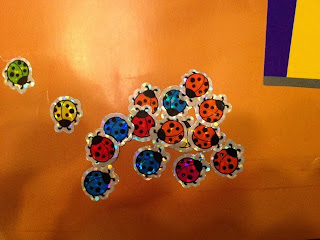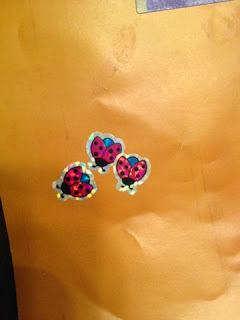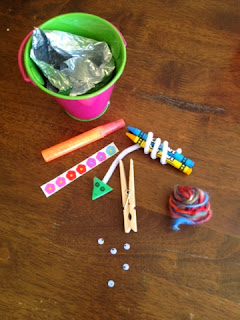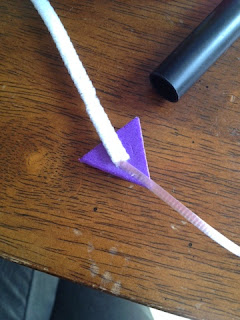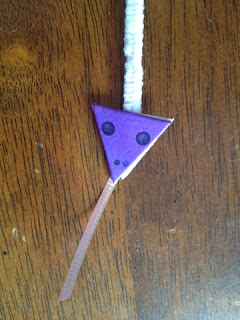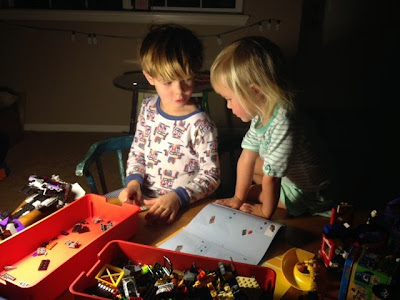
My son brought home a Thanksgiving Day card from school last week. On the outside there was a little turkey made by pasting layers of colored paper on each other and some googly eyes. On the inside was a fill in the blank "I am thankful for ______." Mikey had chosen "Legos" and written the word in his best pen. Beneath his filled in blank, an adult had written "and Momma, and Papa and baby sister." I smiled but wondered why the family was added second. Did Mikey add it as an aside or did the teacher coach him? It matters not (much) but I wonder: if the teacher knew the true meaning of Mikey being thankful for Legos, then would she have felt the need to (presumably) add the family?
You see, about six months ago our family came into a set of Vintage Legos. With Mikey's atrocious fine motor skills, my husband and I knew that they would present very frustrating endeavor for our child. However, we also recognized that the mechanical interesting devices he could build might hold his attention. Sure enough, my husband spent a lot of time and a lot of patience teaching our son how to follow Lego instructions. Every morning the boys would sit down together and build. They would not finish a build in a single day but they would complete one or two steps. Slowly, very slowly, but surely Mikey's fingers became stronger and his attention longer; his confidence grew, too. Now Mikey can follow instructions for Lego sets designed for children twice his age! He still doesn't necessarily complete a build in one sitting but he doesn't REQUIRE his father's instruction/attention to do it. He can do it all on his own.
But he doesn't do it all on his own. Mornings are still for building together. We all roll out of bed together and turn to the toy room. The children sit together working. Mikey gives Anna jobs. (For example, "Here Anna, put your finger here and help me push them together." "Anna, can you find this piece (pointing to a picture)?") My husband and I watch, coffee in hand, happily. All of us are rested, relaxed and enjoying our family time together before the rush of the day begins with breakfast.
So when my son said that he was thankful for Legos, I did not think he was referring merely to the toys (although maybe he was). I let myself think of those special family times that revolved around building set after set of Legos. I also remembered something I wrote a couple years ago about toys:
The value of a toy is not merely in the having of the toy; it is realized when a child plays. The right toy played with at the right time elicits the joy and wonder of learning.










